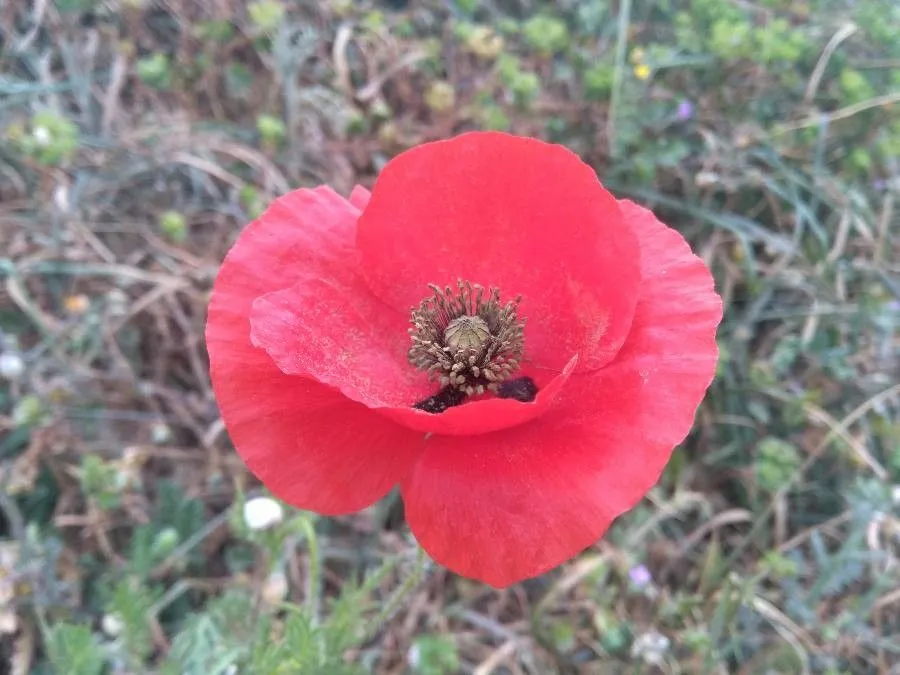
Author: (L.) C.Morales, R.Mend. & Romero García
Bibliography: Lagascalia 15(Extra): 184 (1988)
Year: 1988
Status: accepted
Rank: species
Genus: Roemeria
Vegetable: Unknown
Observations: Canary Is., Europe to Medit.
The Pale Poppy, scientifically known as Roemeria argemone, belongs to the esteemed family Papaveraceae. This delicate yet resilient flower has graced its presence across a vast range of regions, from the picturesque Canary Islands to the diverse landscapes of Europe and the Mediterranean.
Renowned for its light, subtle hued petals, the Pale Poppy has found a niche in various habitats where it thrives and adds a touch of natural elegance to its surroundings. Its gentle appearance, characterized by ethereal petals and a sturdy structure, underscores the plant’s adaptability and timeless beauty.
The Pale Poppy was meticulously documented in the botanical literature outlined in Lagascalia, an authoritative botanical journal, in the 1988 issue (Volume 15, Extra). Esteemed botanists such as C. Morales, R. Mend., and Romero García have significantly contributed to its comprehensive description, ensuring that this species is well-documented and preserved in the annals of botanical history.
Whether dotting the slopes of Mediterranean hills or flourishing in the unique climate of the Canary Islands, Roemeria argemone continues to captivate botanists and plant enthusiasts alike, standing as a testament to the diversity and splendor of the natural world.
En: Pale poppy, Prickly poppy, Long pricklyhead poppy, Long-Headed Bristly Poppy, Pale roughfruit poppy
Ar: خشخاش أرجموني
Be: Мак аргемона
Ca: Rosella de flor petita
Cs: Mák polní, Mak polný
Da: Køllevalmue, Kølle-valmue
Nl: Ruige klaproos
Et: Liivmagun
Fi: Hietaunikko
Fr: Pavot argémone, Coquelicot argémone, Pavot rude
De: Sand-Mohn, Sandmohn
He: פרג מוארך
It: Papavero selvatico
Kk: Апиын көкнәрі
Lt: Smiltyninė aguona
Nb: Klubbevalmue
Nn: Klubbevalmue
Fa: خشخاش بیابانی
Pl: Mak piaskowy
Pt: Papoila-longa-peluda
Qu: K’ita p’akincha
Ru: Мак аргемона
Sk: Mak poľný
Es: Amapola, Amapola macho
Sv: Spikvallmo, Hietaunikko
Uk: Мак пісковий
Cy: Pabi Penwrychog, Drewg Hirben Gwrychog, Pabi Bychan, Pabi Gwrychog, Pabi Hirben Gwrychog
Taken May 29, 2022 by Andrzej Konstantynowicz (cc-by-sa)
Taken Jan 26, 2020 by Catherine Philipona (cc-by-sa)
Taken May 29, 2019 by Jara José (cc-by-sa)
Taken Jun 1, 2020 by Luboš Jirgl (cc-by-sa)
Taken Mar 31, 2019 by François Vidal (cc-by-sa)
Taken Jun 16, 2021 by nimye (cc-by-sa)
Taken Jun 12, 2021 by Mandalorian (cc-by-sa)
Taken Jul 18, 2021 by Andrew ennis (cc-by-sa)
Taken May 29, 2022 by Andrzej Konstantynowicz (cc-by-sa)
Taken May 29, 2022 by Andrzej Konstantynowicz (cc-by-sa)
Taken May 14, 2017 by Tela Botanica − Daniel MATHIEU (cc-by-sa)
Taken May 14, 2017 by Tela Botanica − Daniel MATHIEU (cc-by-sa)
Taken May 14, 2017 by Tela Botanica − Daniel MATHIEU (cc-by-sa)
Taken May 12, 2020 by Daria Gąsiorowska (cc-by-sa)
Taken Mar 9, 2022 by Fabio Biuzz (cc-by-sa)
Taken Mar 28, 2020 by Felfoul Boualem (cc-by-sa)
Taken Apr 18, 2020 by Souhail Janah (cc-by-sa)
Taken Apr 18, 2020 by Souhail Janah (cc-by-sa)
Taken Apr 18, 2020 by Souhail Janah (cc-by-sa)
Taken Mar 9, 2022 by Fabio Biuzz (cc-by-sa)
Taken Apr 18, 2018 by Tela Botanica − Liliane Roubaudi (cc-by-sa)
Taken May 30, 2022 by claire Felloni (cc-by-sa)
Taken Apr 11, 2020 by Christopher Kontaratos (cc-by-sa)
Taken May 31, 2022 by Valentin Wjst (cc-by-sa)
Taken May 12, 2020 by Daria Gąsiorowska (cc-by-sa)
Taken Apr 18, 2020 by R Groot (cc-by-sa)
Taken Jan 1, 1800 by Tela Botanica − Thierry Pernot (cc-by-sa)
Taken Aug 15, 1999 by Photoflora – Benoit BOCK (©)
Taken Jan 1, 1900 by EOL − Encyclopedia of Life (cc-by-nc-sa)
Taken Aug 15, 2006 by Photoflora – Bernard TILLY (©)
Family: Myrtaceae Author: (F.Muell.) K.D.Hill & L.A.S.Johnson Bibliography: Telopea 6: 402 (1995) Year: 1995 Status:…
Family: Rubiaceae Author: Pierre ex A.Froehner Bibliography: Notizbl. Bot. Gart. Berlin-Dahlem 1: 237 (1897) Year:…
Family: Sapindaceae Author: Koidz. Bibliography: J. Coll. Sci. Imp. Univ. Tokyo 32(1): 38 (1911) Year:…
Family: Asteraceae Author: A.Gray Bibliography: Pacif. Railr. Rep.: 107 (1857) Year: 1857 Status: accepted Rank:…
Family: Fabaceae Author: Medik. Bibliography: Vorles. Churpfälz. Phys.-Ökon. Ges. 2: 398 (1787) Year: 1787 Status:…
Family: Aspleniaceae Author: (Cav.) Alston Bibliography: Bull. Misc. Inform. Kew 1932: 309 (1932) Year: 1932…